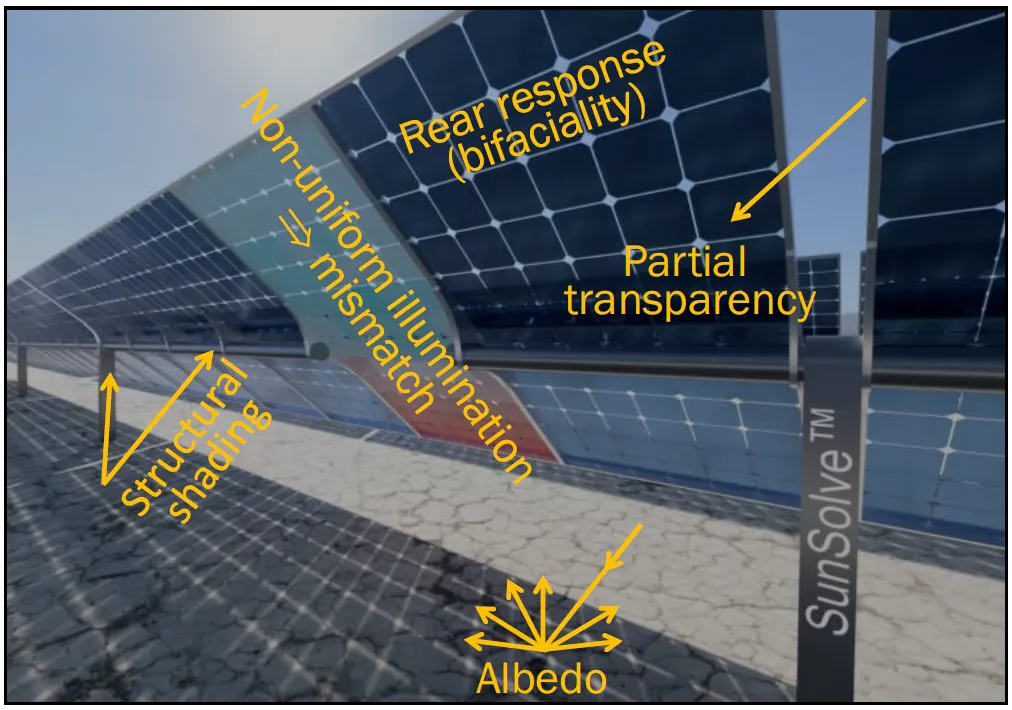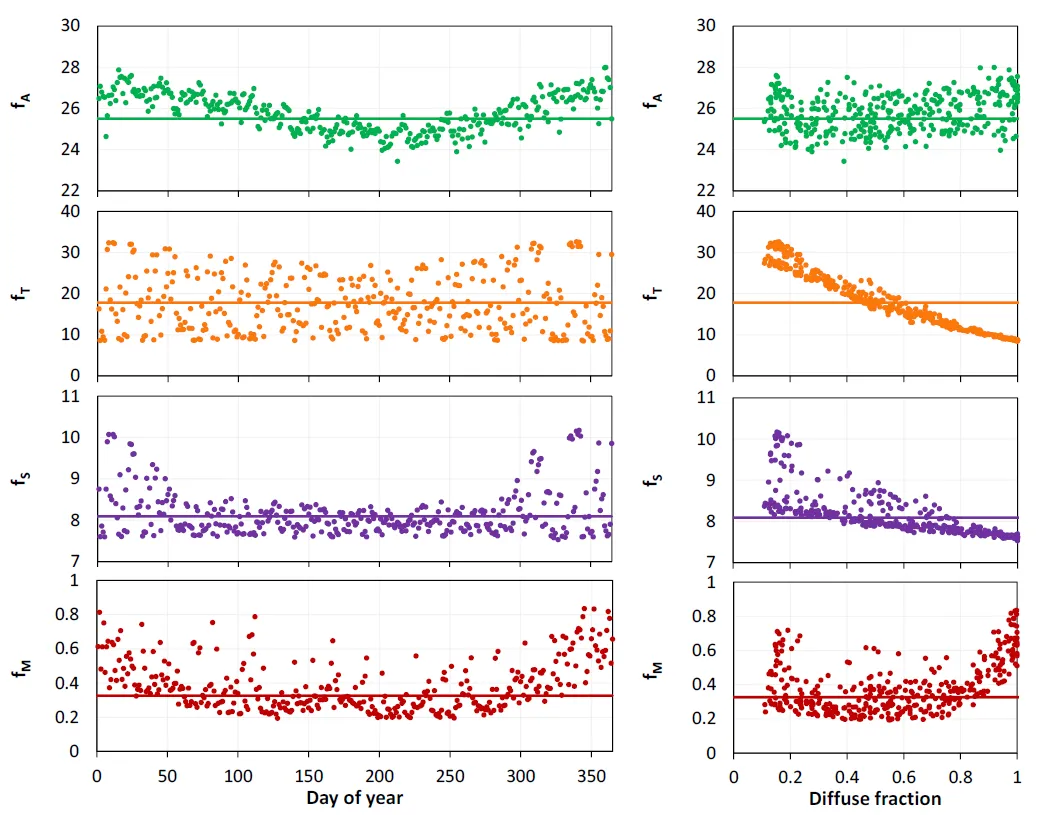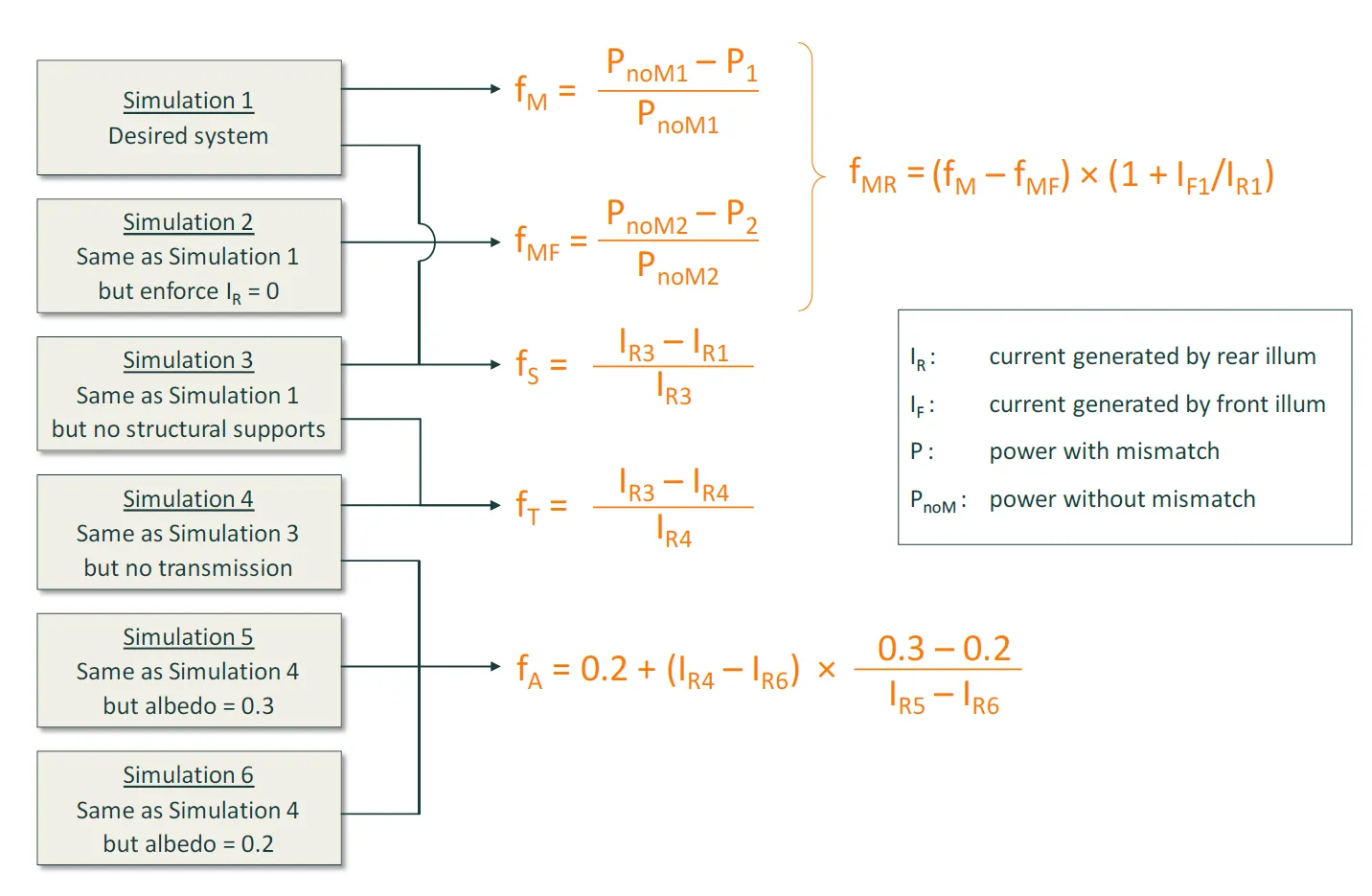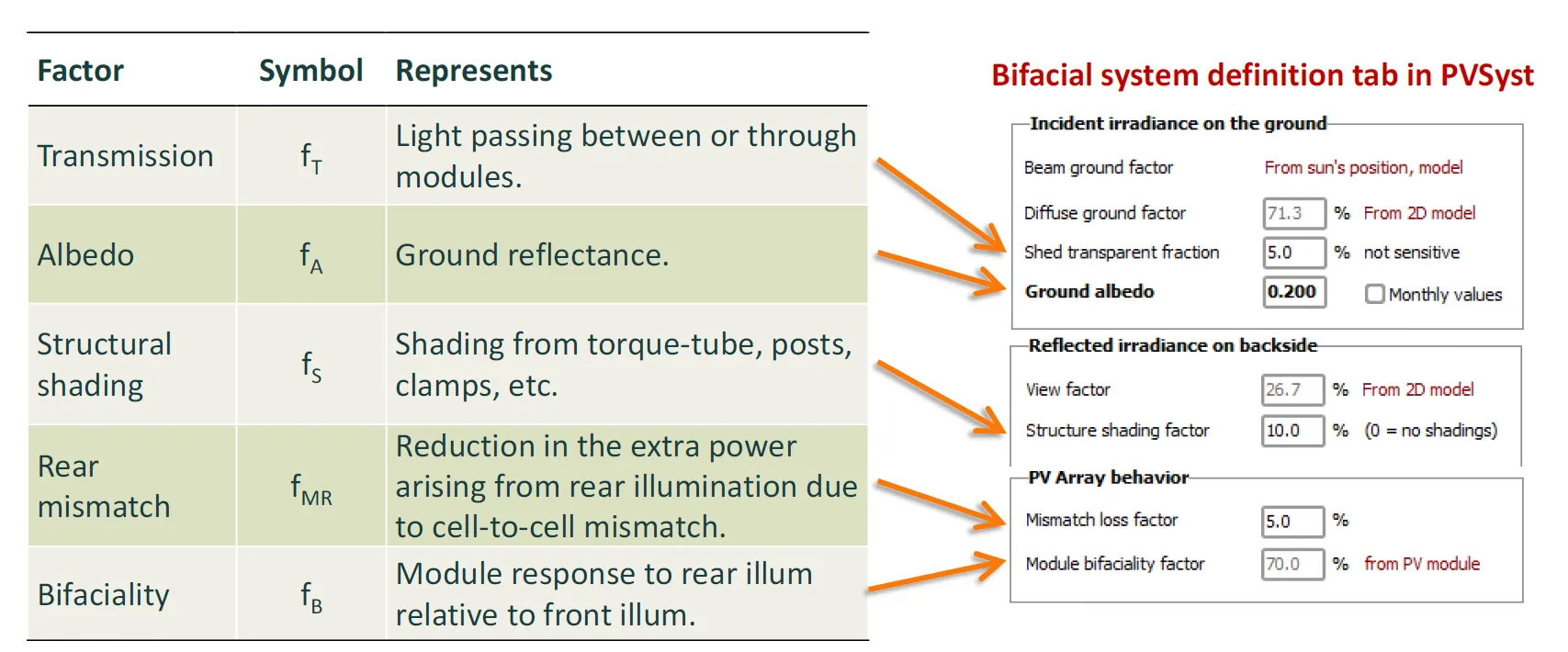Determining PVsyst bifacial inputs with SunSolve
SunSolve Yield provides a validated procedure for determining the bifacial input factors required for accurate PVsyst simulations. These factors capture the optical and electrical effects that PVsyst simplifies through its view-factor model.

Overview
Section titled “Overview”PVsyst represents the rear-side illumination of bifacial systems using five correction factors:
| Factor | Symbol | Represents |
|---|---|---|
| Transmission | fT | Light passing between or through modules. |
| Albedo | fA | Effective ground reflectance. |
| Structural shading | fS | Shading and reflection from torque tubes, posts, frames, and other supports. |
| Rear mismatch | fMR | Reduction in power due to non-uniform rear illumination. |
| Bifaciality | fB | Relative module efficiency under rear vs. front illumination. |
| SunSolve computes these factors from six controlled simulations that isolate each effect by modifying the system scene. | ||
| By comparing these results, SunSolve produces energy-weighted annual averages suitable for direct use in PVsyst. |
The graphs below present example results, where the data points represent the weighted-average input for each day of a typical year under one particular set of conditions.
 Example plot showing fA, fT, fS, and fM
varying with day of year and average daily diffuse fraction.
Example plot showing fA, fT, fS, and fM
varying with day of year and average daily diffuse fraction.
Method summary
Section titled “Method summary”There are two ways to calculate the factors with SunSolve — an automated approach (recommended for most users) and a manual approach for advanced or custom configurations not yet supported by automation.
A short walkthrough video demonstrating the recommended automated workflow is available here: Yield PVsyst Factor Automated Workflow — SunSolve.com A walkthrough video demonstrating the manual workflow is available here: Yield PVsyst Factor Manual Workflow — SunSolve.com
Calculation procedure
Section titled “Calculation procedure”Six SunSolve simulations are used to determine the factors. The outputs from these simulations are then combined to compute fA, fT, fS, fM, and fMR at every hour of the year. The relevant equations are summarised below.
 General approach for determining
fA, fT, fS, fM, and fMR.
General approach for determining
fA, fT, fS, fM, and fMR.
Transmission factor
Section titled “Transmission factor”Derived from rear current with and without transmission between modules:
Note that this also accounts for changes in the total area of ground available in the 3D scene.
Structural shading factor
Section titled “Structural shading factor”Derived from the change in rear current between a fully shaded and a transparent structure configuration:
Albedo factor
Section titled “Albedo factor”The effective broadband albedo is determined by comparing results from simulations with two known reflectances (0.3 and 0.2):
If an albedo with no wavelength dependence is being used, this calculation—and the simulations required to determine it—can be avoided, as it will have no effect on the final results.
Electrical mismatch factors
Section titled “Electrical mismatch factors”Mismatch arises when cells receive unequal irradiance. The total and front-only mismatch factors are:
The rear mismatch factor depends on PVsyst version:
For PVsyst ≥ 7.4.6:
Section titled “For PVsyst ≥ 7.4.6:”For PVsyst < 7.4.6:
Section titled “For PVsyst < 7.4.6:”Note that these values for mismatch are factors, not direct losses. In some situations, the rear mismatch factor can be negative — indicating that the addition of rear irradiance has reduced the overall mismatch loss rather than increased it. For full derivations and discussion of each equation, refer to the white paper linked under File downloads.
Using the results in PVsyst
Section titled “Using the results in PVsyst”After running and analysing the simulations in SunSolve, perform the following steps in PVsyst:
- Set Ground albedo = fA
- Set Shed transparent factor = fT
- Set Structure shading factor = fS
- Set Rear mismatch factor = fMR
- Bifaciality factor = fB (automatically set from the module PAN file)
 Screenshot of PVsyst (v7.4.6) showing
bifacial inputs and their explanations.
Screenshot of PVsyst (v7.4.6) showing
bifacial inputs and their explanations.
File downloads
Section titled “File downloads”Original white paper
Section titled “Original white paper”Instructions on extracting PVsyst inputs with SunSolve This PDF is the original PV Lighthouse white paper that describes how to determine PVsyst bifacial inputs using SunSolve Yield. It lists assumptions, definitions, and derivations for each factor and includes example results. Much of that material is now incorporated into this help page.
Factor extraction spreadsheet (manual method)
Section titled “Factor extraction spreadsheet (manual method)”Spreadsheet for extraction of PVsyst inputs This spreadsheet contains the equations and plots needed to manually extract the PVsyst bifacial inputs, following the approach described in the white paper above.